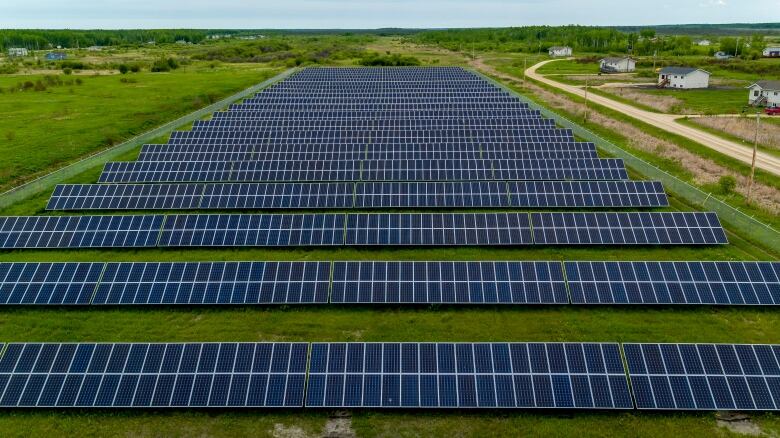Its not 1973 all over again
In 1973 OPEC members in the Middle East imposed an oil embargo on Western nations, leading to the "oil shock," as stations ran out of gas and a global economic crisis ensued. It was a shocking reminder of our dependence on oil.
But more significantly, it made us take a long look at ways to wean ourselves off oil, much as we're trying to do today.
After 1973 energy efficiency became the new buzzword. In some places highway speed limits were lowered to reduce fuel consumption. North American auto companies found their large, gas guzzling vehicles no longer popular as people moved to smaller, lighter, more fuel efficient Japanese and European models to squeeze more out of a litre of gas.
 In the 1970s small Japanese imports swept the North American market because of the oil crisis, but people soon turned back to gas guzzlers. (Honda/Associated Press)
In the 1970s small Japanese imports swept the North American market because of the oil crisis, but people soon turned back to gas guzzlers. (Honda/Associated Press) At the same time, research into alternative energy technologies such as wind turbines, solar panels, geothermal and hydrogen energy intensified. A new public ethos developed around the hope of a green energy future free from fossil fuels.
That was almost half a century ago.
Of course after the shock of 1973, the oil supply crisis faded. OPEC opened the taps. New reserves were discovered, through offshore exploration and new developments in many places, including North America â€" Alberta was a major player in this.The focus on alternatives waned.
But today, clean energy is back in favour not because of any shortage in oil supply, but because we are burning too much of it.
 Pump jacks like this can dominate the landscape in the oil patch, but solar farms and wind turbines may be more familiar sights in the future. (Larry MacDougal/The Canadian Press)
Pump jacks like this can dominate the landscape in the oil patch, but solar farms and wind turbines may be more familiar sights in the future. (Larry MacDougal/The Canadian Press) As we face the dramatic effects of climate change, the good news is that we've profited from the basic research into green energy technology done back in the 1970's and 80's. There are no new inventions needed to decarbonize our society, just improvements and deployment of technologies we already have. In fact, even though it has been in the background, clean technology has seen incredible development over the last half century.
Batteries, an enabling technology for many renewable energy systems, have evolved dramatically. This has driven the development of electric vehicles, with major manufacturers following the example of Tesla and releasing new fully electric models.
A couple of symbolic shifts can be seen in Ford's new lineup. The company that was a significant pioneer in manufacturing gasoline-powered vehicles more than a century ago with the Model T has two high profile electric models. There's a new electric Mustang, a successor to one of the original gas-guzzling muscle cars. Ford is also introducing an electric version of its immensely popular F-150 pickup.
 GE Haliade-X offshore wind turbine (General Electric)
GE Haliade-X offshore wind turbine (General Electric) As more electric vehicles enter the market, economies of scale should mean that costs will come down. Subsidies, regulation, and the increasing costs associated with fossil fuel vehicles should make electric cars more accessible to the average driver. They're getting closer every day.
According to the International Energy Agency, there were 10 million electric cars on the world's roads in 2020, a 41 per cent increase in new registrations from the year before. That number is expected to rise to 140 million by 2030.
To help provide electricity for all those new vehicles, renewable electrical generation is growing and developing. Wind turbines have grown to enormous proportions with the world's most powerful, the GE Haliade-X offshore unit, standing 248 metres, more than twice the height of the Peace Tower in Ottawa. It can generate 14 megawatts of electricity, which, according to GE, means just one turn of the rotor can power an average European home for two days.
China's MingYang Smart Energy has unveiled plans for an even larger unit, which they claim can put out 16 megawatts â€" enough to power 20,000 homes over its 25 year lifespan. These massive units benefit from the efficiency that size brings.
 Solar farms can cover many square kilometres, or they can be more modestly sized like this one in Fisher River, Manitoba that spans seven acres. (Trevor Lyons/CBC)
Solar farms can cover many square kilometres, or they can be more modestly sized like this one in Fisher River, Manitoba that spans seven acres. (Trevor Lyons/CBC) Solar power has also grown to enormous proportions with the largest solar farms, in China, India, the Middle East and the US, covering several square kilometres and producing thousands of megawatts.
The costs of renewable energy have continued to decline and in some countries renewables can produce electricity at below the cost of fossil fuel generation. It's becoming clearer that the technology to go green already exists, which is comforting news. It is now a matter of implementing those technologies on a large enough scale and at a fast enough pace. That will likely require government incentives and policies.
That is where the politicians come in, and that is why meetings like COP26 are so important.
0 Response to "Its not 1973 all over again"
Post a Comment